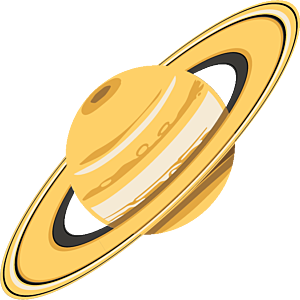The Downlink • Feb 23, 2024
A ridge over hidden water
Space Snapshot

This image, taken by the HiRISE camera on NASA’s Mars Reconnaissance Orbiter, shows a series of ridges that curve from the top-right of the image to the bottom-left. These ridges show the location of old river beds where water flowed in the distant past. Material deposited by water made the river beds harder than their surroundings, leaving them intact when wind eroded the area later. Because Mars was once a warm, wet planet, it remains one of the top places to look for signs of past or present life in our Solar System. Image credit: NASA / JPL-Caltech / University of Arizona.
Fact Worth Sharing

The Mars Reconnaissance Orbiter has been studying Mars since 2006. Among other things, its observations have suggested that water may have flowed on Mars about a billion years longer than previously thought, as recently as 2 to 2.5 billion years ago.
Mission Briefings


Eris and Makemake may be more active than we thought. New observations from JWST suggest that the icy dwarf planets Eris and Makemake might have warm geochemistry taking place in their rocky cores. Both worlds are located in the Kuiper Belt beyond Neptune, an area that is turning out to host much more dynamic worlds than researchers had previously expected. Pictured: An artist's concept of Makemake and its moon, nicknamed MK 2. Image credit: NASA / ESA / A. Parker (SWRI).

The sample from OSIRIS-REx is double what the mission intended to collect. Now that its sample container has been fully opened, the team behind NASA's OSIRIS-REx mission has reported that the spacecraft delivered 121.6 grams (4.29 ounces) of material from asteroid Bennu. This is the largest asteroid sample ever collected in space and over twice the mission's requirement.

NASA is looking for Martians. The agency recently opened a call for participants in a simulated year-long Mars mission. A four-person volunteer crew will be selected to live and work inside a 158-square-meter (1,700-square-foot) habitat based at NASA’s Johnson Space Center in Houston. The crew will simulate spacewalks and robotic operations, maintain their habitat, grow crops, and deal with the challenges of a mission on the Martian surface, including equipment failures and communication delays.

A new Australian lunar “Roo-ver” is in the works. The Australian Space Agency is building a semi-autonomous rover, named "Roo-ver" after Australia’s national animal, the kangaroo, through a public contest. The rover will launch to the Moon as early as 2026 through a partnership with NASA’s Artemis program, where it will collect samples of regolith from which NASA will try to extract oxygen as a test of technologies that would enable human exploration of the lunar surface.
From The Planetary Society


How can we help find life beyond Earth? We asked the experts. Last week The Planetary Society hosted a two-day symposium bringing together some of the world’s leading experts in the search for life, representing fields including astrobiology, SETI, planetary science, and more. This symposium will inform the Society’s future efforts to advance the search for life. Pictured: Symposium attendees and Planetary Society staff at our headquarters in Pasadena, CA. Image credit: The Planetary Society.

OSIRIS-REx is now OSIRIS-APEX. The mission, which successfully returned a sample of the asteroid Bennu back to Earth, has been renamed to reflect its new objective: to explore the asteroid Apophis as it passes Earth in 2029. Scott Guzewich, deputy project scientist for APEX (APophis EXplorer), joined this week’s Planetary Radio to discuss the next steps for the mission.

Want to meet other space enthusiasts? How about 10,000 of them? The Planetary Society’s online community now has more than 10,000 members from around the world. These are people who share a passion for space and want to learn and work together to advance science and exploration. One of the most popular activities in the community is our monthly book club. The next meeting is on Feb. 29, featuring a live video discussion with author Leonard David about his book “Moon Rush,” which digs into the past, present, and possible futures of lunar exploration.
What's Up

In the evening sky, look for yellowish Saturn low to the western horizon, and bright Jupiter higher up. In the predawn, you’ll find super-bright Venus and the much dimmer Mars very low to the eastern horizon. Find out what else February’s night skies have in store.
Special opportunities


Going once, going twice! Grab your eclipse-related T-shirts, mugs, posters, and more at our Eclipse 2024 auction. You can purchase swag or bid on stellar packages, all while supporting The Planetary Society. Your bid supports our mission to advance space science and exploration. The auction closes on Friday, March 8, at 12:00 p.m. ET so start shopping today!

Enter to win a signed telescope. Planetary Society CEO Bill Nye is sending one lucky winner a personally signed telescope! Enter to win at EclipseWithBill.com and you'll also be in the running to win a trip to meet Bill at Eclipse-O-Rama 2024, The Planetary Society's two-day camping festival in April!
Wow of the Week

Ridges on Jupiter’s moon Europa are of a different kind than those on Mars, but also hint at the presence of water — this time below the icy surface. An image of the ridges captured by NASA’s Galileo spacecraft wasn’t just impactful scientifically; it inspired Planetary Society member Edward Smith to draw this pencil sketch. When I came across the photo I was floored,” said Ed, “and decided to make a drawing of it.” Image credit: Edward Smith.
Send us your artwork!
We love to feature space artwork in the Downlink. If you create any kind of space-related art, we invite you to send it to us by replying to any Downlink email or writing to [email protected]. Please let us know in your email if you’re a Planetary Society member!


 Explore Worlds
Explore Worlds Find Life
Find Life Defend Earth
Defend Earth

